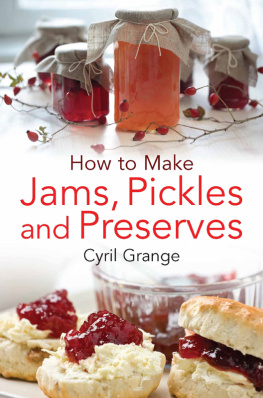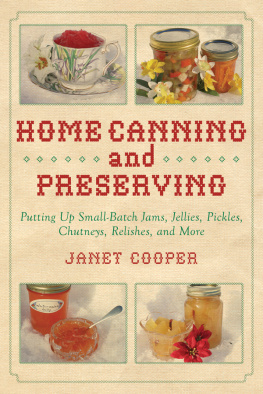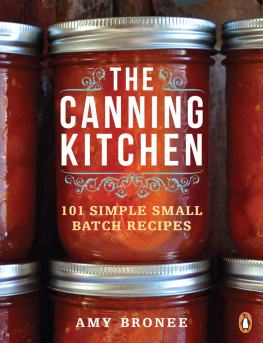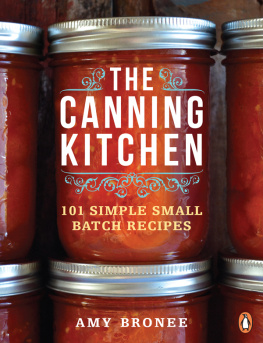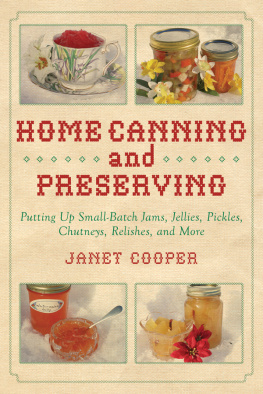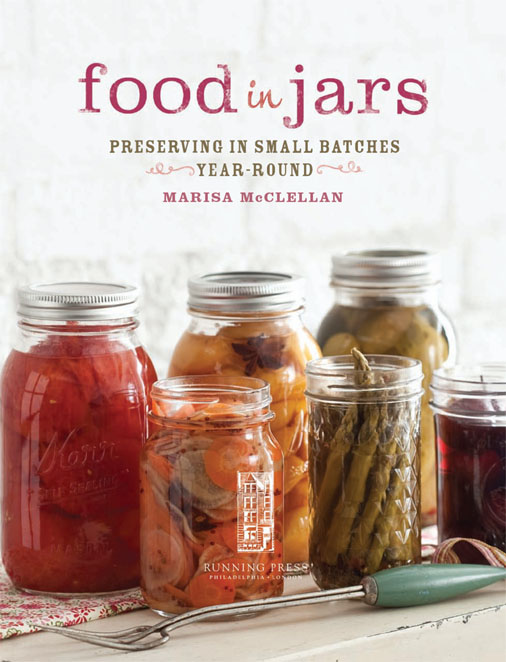
Copyright 2011 by Marisa McClellan
Photographs 2011 by Steve Legato
Published by Running Press,
A Member of the Perseus Books Group
All rights reserved under the Pan-American and International Copyright Conventions
This book may not be reproduced in whole or in part, in any form or by any means, electronic or mechanical, including photocopying, recording, or by any information storage and retrieval system now known or hereafter invented, without written permission from the publisher.
Books published by Running Press are available at special discounts for bulk purchases in the United States by corporations, institutions, and other organizations. For more information, please contact the Special Markets Department at the Perseus Books Group, 2300 Chestnut Street, Suite 200, Philadelphia, PA 19103, or call (800) 810-4145, ext. 5000, or e-mail .
Library of Congress Control Number: 2011930504
E-book ISBN 978-0-7624-4507-3
987654321
Digit on the right indicates the number of this printing
Cover and interior design by Amanda Richmond
Edited by Kristen Green Wiewora
Typography: Rosewood, Clarendon, and Helvetica
Running Press Book Publishers
2300 Chestnut Street
Philadelphia, PA 19103-4371
Visit us on the web!
www.runningpresscooks.com
TO MY MOTHER, LEANA.
She is the reason I put food in jars.

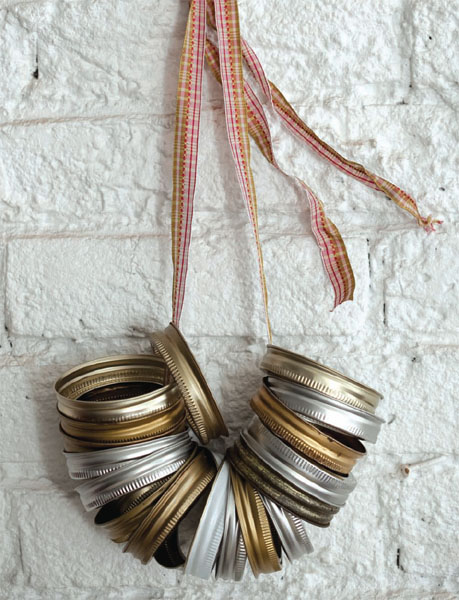
CONTENTS
W HEN I WAS FIRST LEARNING TO WALK, MY MOM and her best friend held a ceremony of sorts for my newly mobile self. They laid out a circle of objects. Paint brushes, musical instruments, a toy stethoscope, anything that could represent a future career. They then set me in the middle of the circle to let me explore. The hope was to discern a little about what I would become when I grew up. I grabbed a felt tip pen and a particularly well-worn wooden spoon and settled down to gnaw on my newly gotten treasures. They cheered and announced that Id become a food writer someday. Much to everyones delight, thirty-plus years later, thats exactly what Ive become.
I grew up in a household that occasionally canned. Living in California and Oregon meant that during the summer, there was always an abundance of berries, plums, and apples. Two or three times a year, wed go picking, gather windfall apples, or benefit from the benevolence of a friend with more fruit than time. My mom would pull out her largest stockpot and wed pit, chop, mash, and simmer our way to half a dozen glowing jars of jam or fruit butter.
It wasnt until I was twenty-six that I started canning on my own. I was living in Philadelphia by then and one summer day, a friend and I went blueberry picking. When I got home, I did what felt natural. I made some jam. (Of course, I called my mom ten times during the process to consult.) With that single batch, I was well and truly bitten by the canning bug and had to do more. When I decided to start my own food blog, writing about canning and preserving just seemed like the right thing to do. I had no idea I was creating a career for myself as a canning teacher, writer, and all-around evangelist.
These days, I can because I love the process and the results. Once you start, theres really no going back flavor-wise to commercially made jams, chutneys, and pickles. Its also something of a deal. I like to compare it to the stock market practice of buying low and selling high: You get your produce at the peak of its season, when its cheap, ripe, and delicious (thats the buying low part), invest a bit of time, and then enjoy the fruits of your labor all year round (sell high). In addition to the economic benefits, theres a great deal of joy and satisfaction to be had in knowing what goes into the food that you and your family eat.
This isnt to say that Im encouraging people to go crazy and start preserving everything they eat. I certainly dont do that and its not a reasonable expectation these days. However, I do suggest that you find one or two things that you love to eat and make those the items you focus your energies on. Specialize. Make a yearly habit of cooking up some strawberry jam, peach salsa, or a dozen pints of dilly beans. Its really all about what brings you joy.
GETTING STARTED: EQUIPMENT
Most people believe that you need a ton of special equipment in order to get canning. Truth is, provided your kitchen is stocked with some basics (Im talking pots, bowls, and measuring cups here, not Viking stoves) you can do a wide variety of canning with what youve already got.
THE POTS
The first is a nice roomy pot for cooking your jam or bringing brine to a boil. I like to use either enameled cast iron or stainless steel (All-Clad makes an 8-quart stock pot that is perfection for jams, jellies and fruit butters, but any pot 6 to 10 quarts/5.7 to 9.5 liters in capacity will work). Make sure that you choose a nonreactive pot (no bare cast iron or untreated aluminum); otherwise, your finished product could end up with a metallic flavor. Know also that when it comes to the shape of your pot, wider is better. It increases the surface area of the jam and makes for shorter cooking times.
The second pot you want to have on hand is a small saucepan, for simmering the lids. Standard canning jars in the United States are three-part contraptions. Youve got a jar, a ring (also known as a band), and the flat metal lid. Theres a strip of sealing compound embedded in each and every lid that must be softened prior to use. To soften that compound, you simply simmer (try not to boil them if you can manage it) the lids in a small pan of water for ten or so minutes. Do remember that lids can only be used once for canning (if you soften a couple too many during canning prep, they can be used again. They just cant be sealed to a jar and then reused).
The last pot is your canning pot. A lot of people think they need to spend some bucks here and get themselves one of those speckly enameled pots with the specialized rack. Except Ive found that after a couple of seasons, they start to rust and break down. Plus, whos got space for a huge pot that only serves one purpose?
I like to use my standard stock pot (its made by Cuisinart and sells for about $60) with a small round cake cooling rack dropped in the bottom as my canning rig. Any large pot will work as a canning pot, as long as its deep enough so that the jars are fully submerged with an inch of water covering them and youve still got a bit of room for the water to boil.
If you do choose to set up your own canning pot, dont skip the rack. It allows the boiling water to fully circulate and protects the jars from the direct heat of the burner, which in turn helps to prevent breakage.
OTHER TOOLS
In addition to your pots, its helpful to have several measuring cups on hand. I like having a few larger-capacity heat-resistant (such as Pyrex) measuring cups around, as well as a stainless-steel 1-cup/250 ml measure (so handy for filling 1-pint/500 ml and half-pint/250 ml) jars.
Next page

